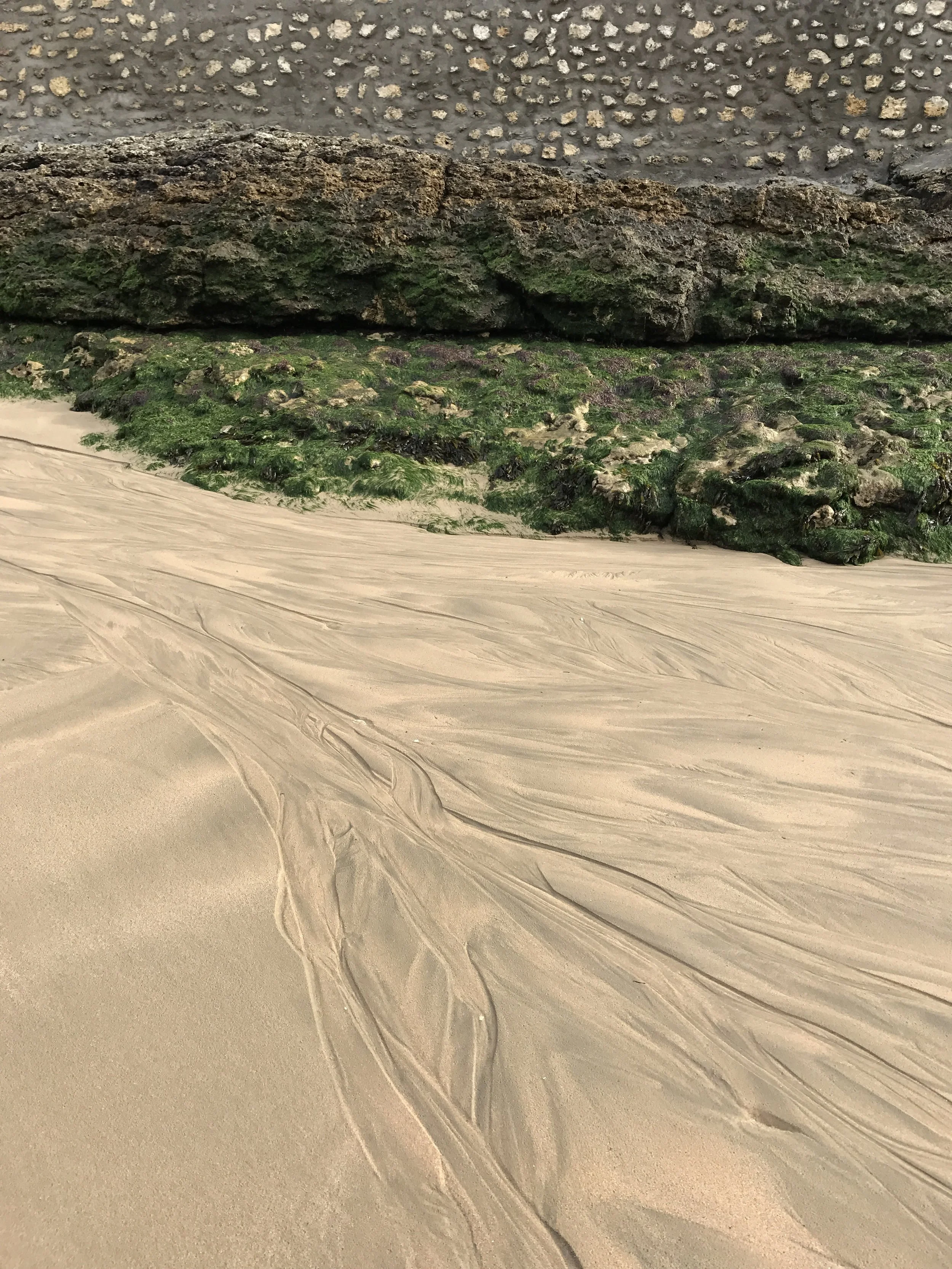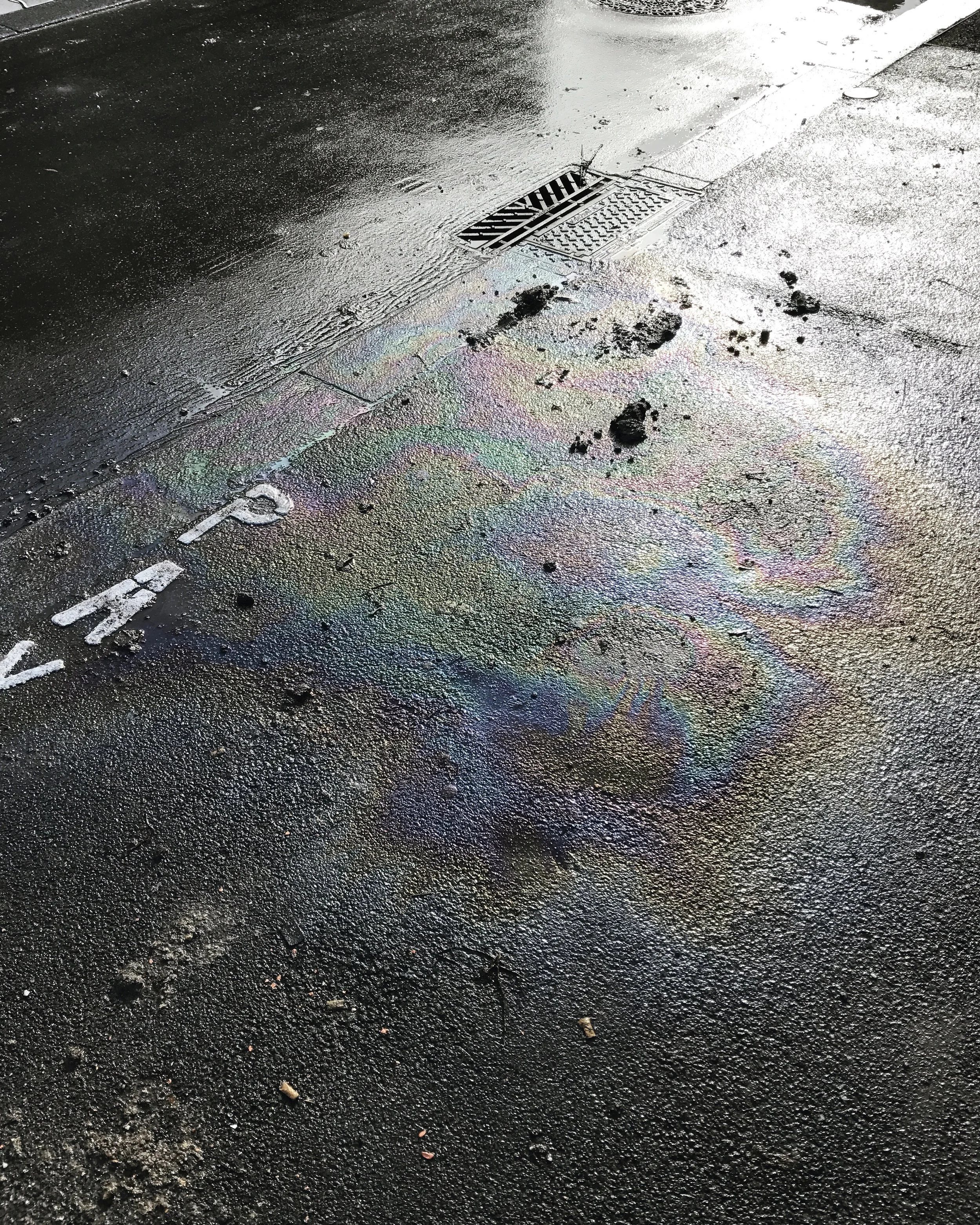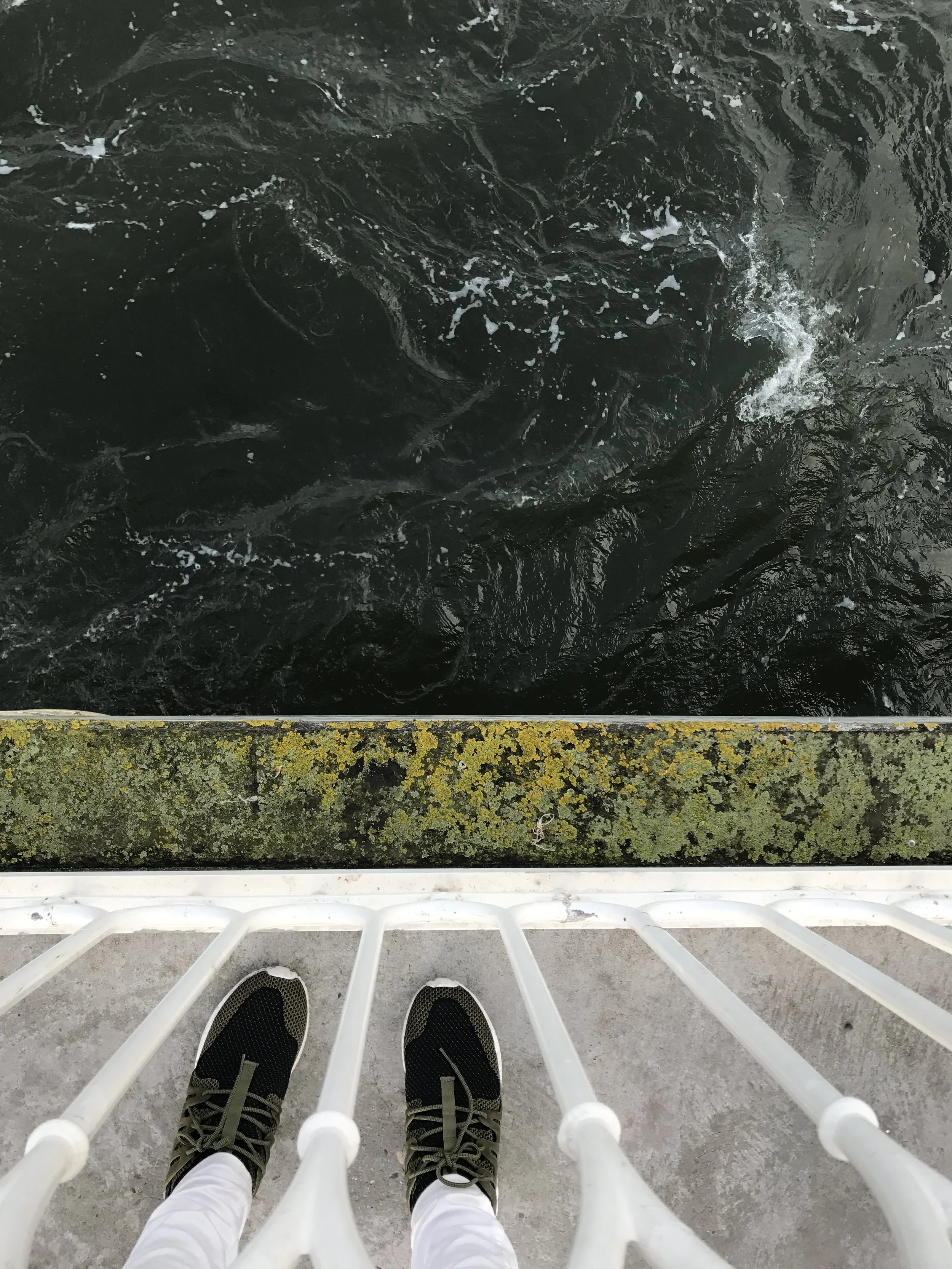Welcome to Palais
A coastal wall in Saint-Palais-Sur-Mer. This exposed aggregate structure is (assumedly) made from a granitoid stone and concrete. It sits upon a natural bed of sedimentary rock full of tidal basins and overlooks a sand beach full of shells. Shoutout to friend and geologist Christina for helping me identify.
In Bordeaux I saw cobblestone, concrete, tidal pools, marble, terrazzo. I ran my fingers across pink sandstone and lichens, and old white wrought iron that was last painted a few decades ago. Sand, pine needles, oyster shells, granite, fiberglass, and stained glass helped define a day trip up to where the Gironde River meets the Atlantic Ocean. I (stupidly) put my feet in the churning January ocean swells and carefully sidestepped an shimmering oil slick on the asphalt outside the train station. I had my attention stolen by an old green wooden door with flaking paint, patinated copper hardware, and faded graffiti. My trip to this region was defined by materials, textures, smells, and sounds.
An oil slick on the street outside Gare de Bordeaux Saint-Jean.
Interested in this, I began to explore why this the materials were so compelling, and how textures can add a sense of depth and richness to an environment or design project. Most natural places have something beautiful about them, but new construction (and a lot of old construction) tends to destroy beauty and replace it with buildings and spaces cheaply designed and built with expediency in mind, instead of a rich user experiences. One of the reasons that cities like Bordeaux have this gravity to them is that most of their historical buildings were designed with an incredible sense of care and worth, using vernacular materials or importing high-end finishes to make places worth visiting, and enjoyable to see every day, rather than just bearable. Nature does a good job of this on its own, in part because everything in nature is organic and environment-specific, but it also benefits from being aged. Stone that has been beaten senselessly by the ocean for a thousand years has more of a narrative in its surface than something new.
A piece of pink and green granitoid stone that helps form a jetty in Le Verdon-sur-Mer.
These are concepts that are hard to replicate in new construction, which makes up most of the United States. New products and modern construction are designed to streamline process and cut cost, often at the detriment of meaningful and storied design. Architects can churn out the same building over and over without tailoring designs to fit into the context of its location or users. Product designers often create work that fits seamlessly into a manufacturing process but doesn’t focus on two very important parts of the user experience; tactility and texture. Very often, we walk into a building, grab a door handle, sit in a car, push a button on a product, and think, “This feels cheap.” I’m tired of that, and consumers are, too.
The day the ocean and I wore the same thing. A pier at Arcachon, cast concrete, painted wrought-iron, cement covered in lichens, and the ocean.
Palais is a project that will span several years and comprise of the cataloguing and exploration of textures and materials around the world, what makes them unique, and thoughts on how to bring those feelings into new design and construction.
In the coming months, I’ll be revisiting Bordeaux, and traveling to Miami, Los Angeles, New York, and several other cities to try to get to the crux of how materiality and tactility give each of those locations a sense of place. I'll then design something based on what I learn in each place. Furniture, architectural projects, fine art prints, whatever I feel is the best expression for the place, everything is on the table.
A sketch for carpet planks, based on the pier at Arcachon.
The first project will be with an international flooring company, working with their designers to create some luxury vinyl tiles and matching carpeting. Details to come soon.
The page for our furniture sales will be up in the coming weeks. We just have a few more things to finalize.
I’m so excited to make beautiful things and share them with the world.
Thank you for following the journey.




